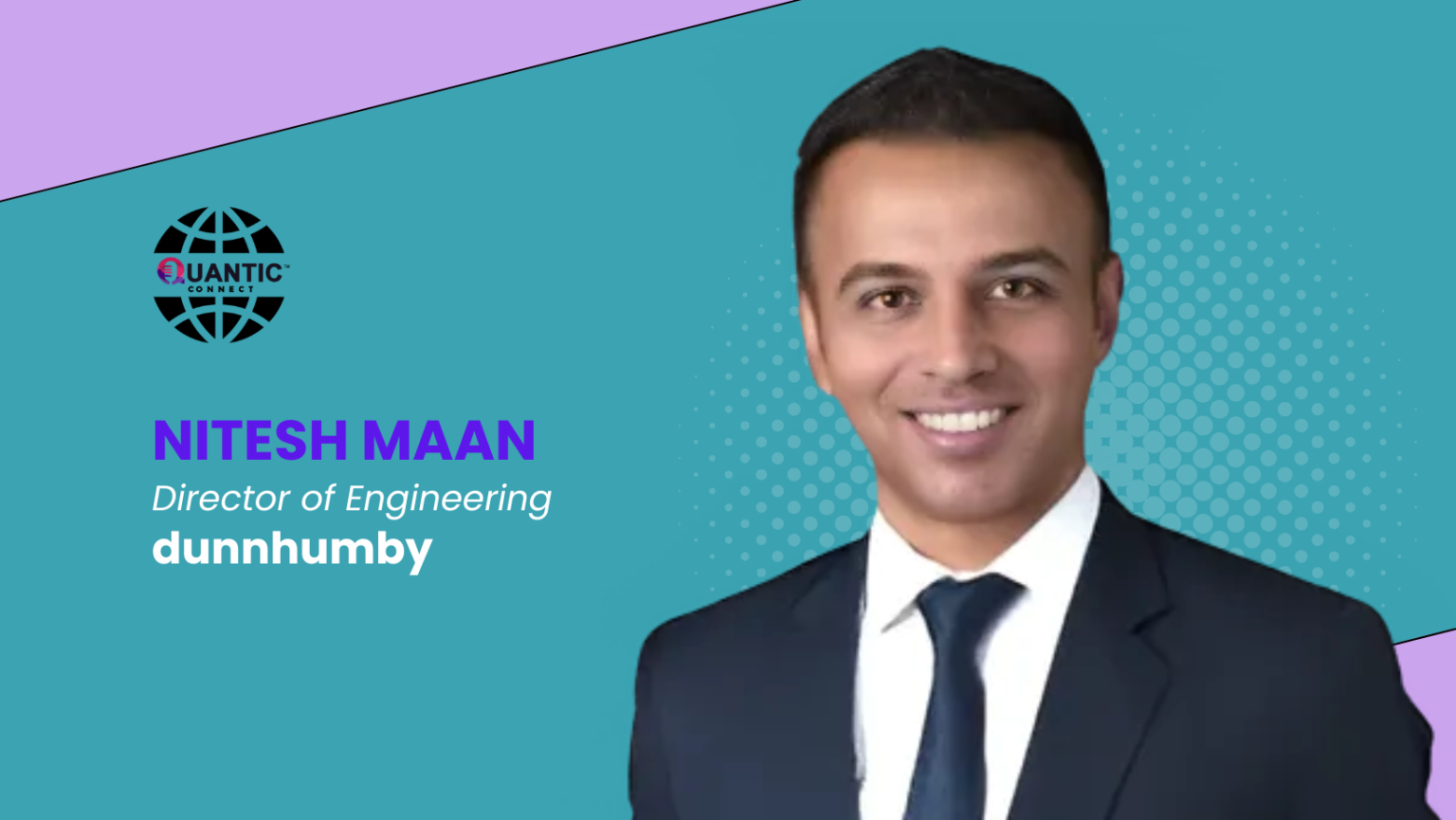Delhi, 30th September, 2024: In today’s fast-paced and ever-evolving world, senior leaders face the unique challenge of balancing professional responsibilities with personal time, while also continuously adapting to new opportunities and changes. Whether navigating work-life balance on weekends, reflecting on alternative career paths, or finding inspiration from diverse role models, leaders often possess a wealth of insights that drive both their personal growth and professional success. In this article, we explore the reflections of a senior leader, offering a glimpse into how they manage their time, find fulfillment, and remain adaptable in an increasingly dynamic landscape.
Join Mr. Nitesh Maan, Director of Engineering at dunnhumby in an engaging conversation with Mr. Marquis Fernandes, who leads the India Business at Quantic India as they navigate and understand the critical touch points to rewind, rejuvenate and re- learn the from great leaders and books, that helps you give a fresh perspective towards your work and personal life.
Mr. Nitesh has over two decades of experience in leading and scaling software engineering teams. Specializing in DevOps, Microservices architecture, and Cloud-native solutions, Nitesh fosters technical excellence and platform maturity in dynamic, high-growth environments. Committed to engineering best practices and team development, he leverages his extensive experience to deliver impactful solutions.
What does a typical weekend look like for a senior leader like you, balancing work responsibilities and personal time?
Weekends are my time to unwind and focus on personal activities. I make it a priority to spend quality time with my family, whether it’s helping my kids with their activities or enjoying a simple, relaxed day together. These moments are important to me and allow me to recharge.
I also use the weekend to catch up with friends, read a book, or go for a hike to stay active and clear my mind. Recently, I’ve been learning meditation, which has been a great way to find a bit of calm amidst the usual busy routine.
While I sometimes check in on work briefly, I make a conscious effort to set boundaries and ensure my weekends are about recharging. This balance helps me stay refreshed and ready for the challenges of the upcoming week.
If you weren’t a C-suite leader, what career path would you have chosen instead?
If I hadn’t pursued a career in engineering leadership, I believe I would have been an artist. What appeals to me most, whether in software or any other field, is the process of creation—tinkering with ideas, experimenting, and bringing something new into the world. This is what led me to software engineering in the first place, where I could build, solve problems, and create impactful systems.
However, I’ve always had a strong visual side as well. Painting, especially landscapes that capture the beauty of nature, has been a personal passion of mine. The same creative drive that led me to engineering could easily have led me down a path of artistic expression. As an artist, I would focus on the natural world, using my art to convey the serenity and complexity of landscapes, much like how I approach building systems—through careful attention to detail and a desire to create something meaningful.
What is the one piece of life advice you would like to share with others as an individual?
One piece of advice I always return to is the importance of work-life balance. In today’s fast-paced, goal-oriented world, it’s easy to get caught up in the idea that relentless pursuit of success is the only way forward. However, I’ve found that true, lasting achievement happens when we make time for life outside of work. Spending time with family, friends, and hobbies not only helps recharge but also enhances mental well-being, which ultimately improves our performance at work.
Maintaining balance doesn’t mean you are less driven; it means recognizing that in order to perform your best at work, you need to take care of yourself. Engaging in hobbies or personal interests broadens your thinking and can even help you develop skills that benefit both your personal and professional life. Leaders who demonstrate this balance show that success is about more than work alone; it’s about thriving in every area of life.
What is the one book you would recommend to others and why do you believe it’s a must-read?
I recently read The Culture Map by Erin Meyer, and I highly recommend it, especially for anyone working in today’s globalized environment. The book offers deep insights into how cultural differences shape communication, decision-making, and collaboration within teams that are spread across various regions. In the increasingly connected world we live in, it’s common to work with colleagues from diverse cultural backgrounds, and The Culture Map helps bridge the gaps in understanding that can arise from these differences.
Meyer provides practical frameworks to navigate these cultural nuances, which is essential for avoiding miscommunication and maximizing team synergy. What I found particularly valuable is her exploration of how certain cultures approach feedback, scheduling, and leadership styles differently, and how being aware of these subtleties can transform global collaboration into a competitive advantage rather than a challenge. For anyone who leads or works in distributed teams, this book is a must-read to ensure effective communication and smooth collaboration across borders.
Who is your role model, and what qualities or achievements of theirs inspire you the most?
I don’t have just one role model; rather, I’m inspired by a blend of qualities from various leaders and creators. For instance, I admire the visionary leadership of people like Satya Nadella and Sundar Pichai, who have transformed their organizations by fostering innovation while staying grounded in empathy. Their ability to drive change while maintaining humility is something I deeply respect.
At the same time, the relentless creativity and boldness of innovators like Elon Musk and Steve Jobs inspire me to continuously push boundaries and experiment with new ideas. Their willingness to take risks in pursuit of something greater reflects my own approach to both leadership and creation.
I also draw inspiration from global leaders like Barack Obama, whose ability to communicate across cultures and inspire people through a shared vision is a skill I strive to emulate in my own leadership. Balancing ambition with well-being, as advocated by figures like Arianna Huffington and Sheryl Sandberg, is another principle I hold close. Ensuring that success doesn’t come at the cost of mental or physical health is key to long-term fulfillment.
Finally, I am moved by the creative genius and curiosity of figures like Leonardo da Vinci. His desire to explore, tinker, and create something lasting resonates with my own passion for building—whether it’s software systems or something more artistic.
It’s the combination of visionary thinking, creativity, empathy, and resilience from these diverse role models that truly inspires me.
To know more about us / publish your article, reach us at
www.quanticindia.com
marquis@quanticindia.com.



